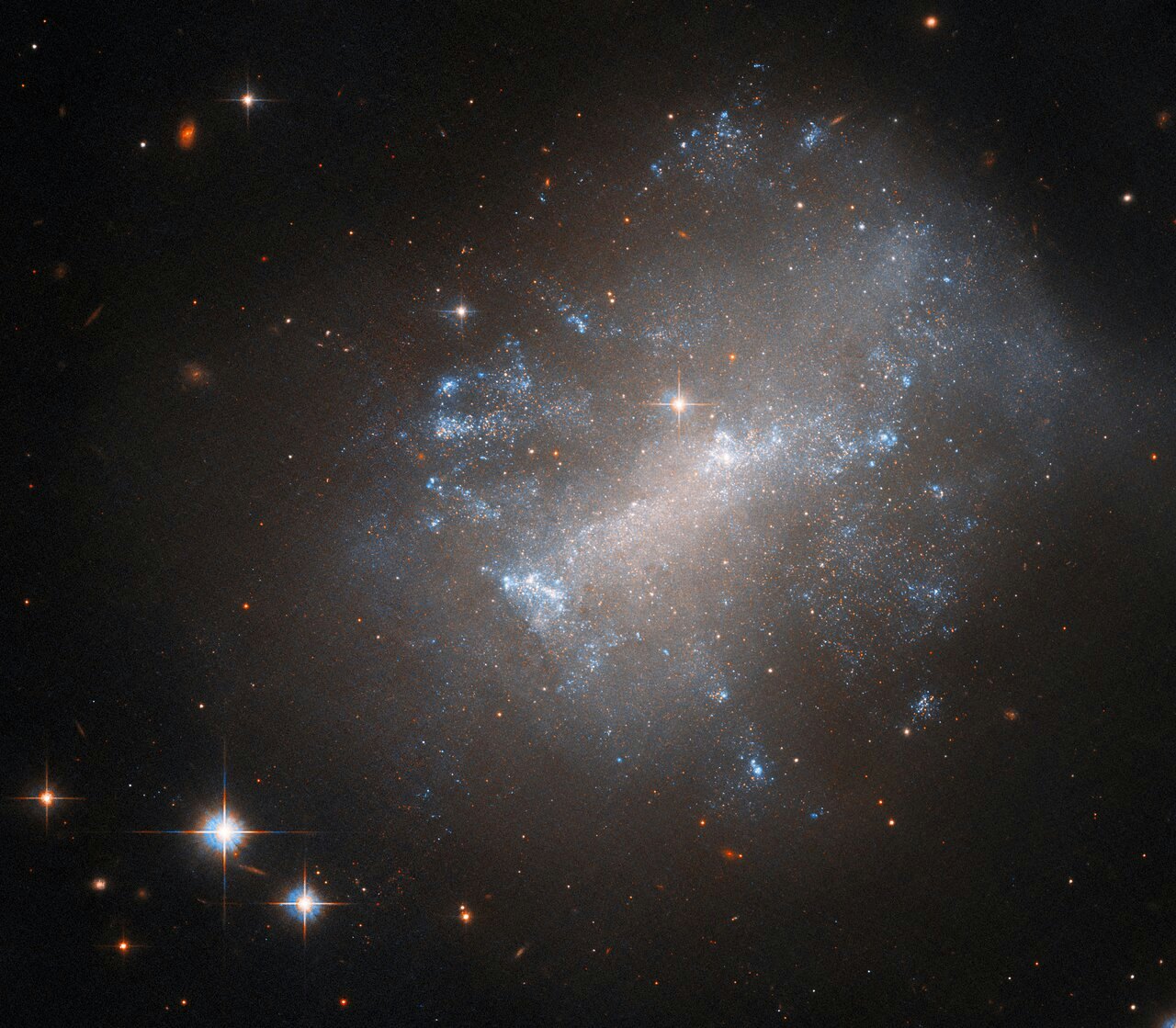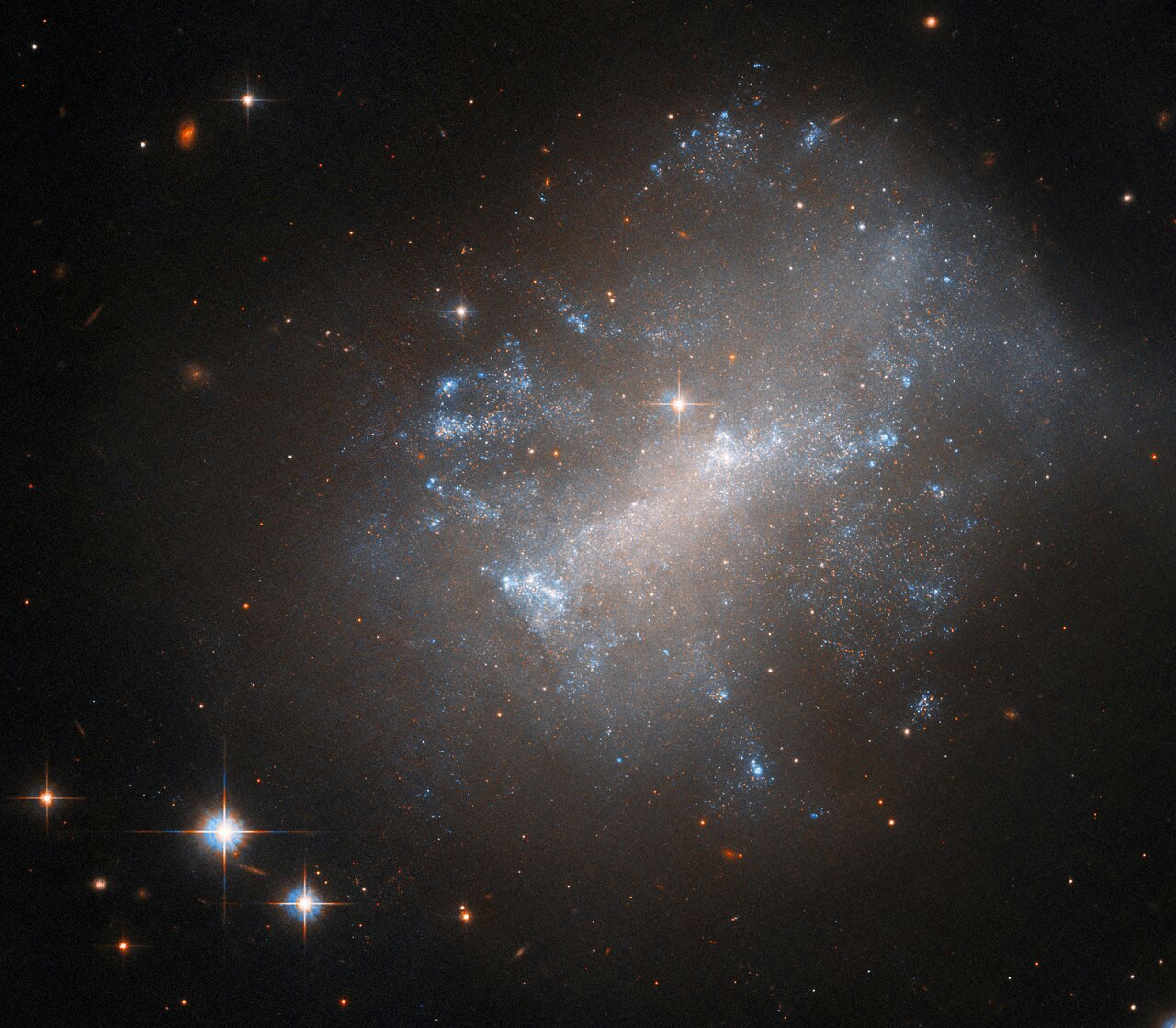
A glittering smudge appears front and center in a new NASA image published on Friday. It may come as a surprise that this hazy region, located 44 million light-years away in the direction of the constellation Pegasus, is actually a galaxy.
The new image is from the Hubble Space Telescope, now in its 33rd year. Periodically, NASA and the European Space Agency (ESA) publish dazzling views that Hubble has snapped of the universe. Galaxies are a popular target for the heritage space mission, though the one featured in Friday’s image, called NGC 7292, is unusual.
Astronomers have labeled the galaxy as irregular. NGC 7292 has earned this title because it lacks the broad arms of spiral galaxies and the elongated shape of elliptical galaxies. NGC 7292 also piques curiosity because it is very faint, “barely distinguishable against the backdrop of the night sky,” Hubble officials write in the image description.

But what NGC 7292 lacks in dazzling structure, it makes up for in other fascinating ways. Astronomers directed Hubble to peer into this strange galaxy because nestled within it are the traces of a fascinating explosion.
Rewinding the clock on a supernova
Supernovas come in a variety of sizes. The scenarios that precede them can differ from one to the next. One sort of supernova in particular, called a Type II supernova, requires the collapse of a massive star, then a rebound, which culminates in an epic finale that tears a star apart.
“Astronomers observed NGC 7292’s supernova in 1964 and named it SN 1964H. Studying the stellar neighborhood of SN 1964H helps astronomers estimate the initial mass of the star that went supernova,” Hubble officials write.
In addition, astronomers rewinding the clock on this “catastrophic explosion” want to know about any other objects that once engaged with the forlorn star. “Observations could help uncover surviving stellar companions that once shared a system with the star that became SN 1964H,” they add.
Friday’s image is part of an observational campaign to study Type II supernovas. With this work, they “scrutinized the aftermath” of these explosions “to learn more about their diversity,” Hubble officials write.
Faint and “barely distinguishable”
Galaxy NGC 7292 isn’t very bright, and for this reason, astronomers classify it as a low surface brightness galaxy.
Such faint galaxies are typically dominated by gas and dark matter rather than stars, Hubble officials write.
Dark matter is a major subject in modern astronomy. Little is known about this elusive substance, but it’s thought to have a major influence on the cosmos. Future missions like ESA’s Euclid spacecraft and NASA’s Nancy Grace Roman Space Telescope will explore dark matter further.
Galaxy NGC 7292 is mesmerizing proof that there’s always more to see beyond a first glance.







